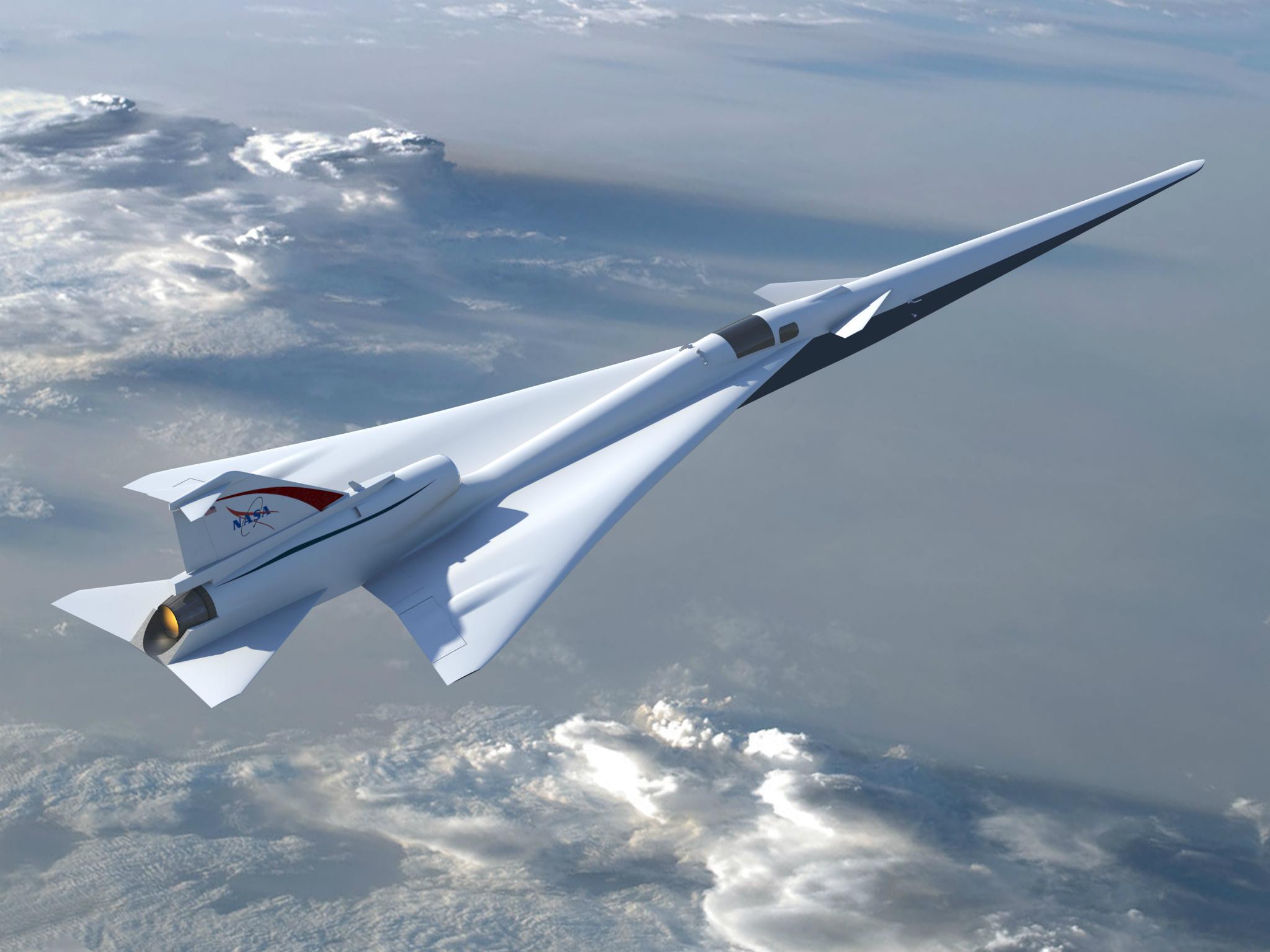Nasa developing supersonic alternative to Concorde that will be much quieter and more efficient
QueSST aircraft will generate shock waves that produce a soft thump or rumble, rather than a huge sonic boom

A new type of supersonic plane that is quieter and more efficient than Concorde, allowing it to fly at max speed over land for the first time, has moved a step closer to reality.
The Quiet Supersonic Technology (QueSST) experimental aircraft, which is being developed by Nasa, would fly at speeds of Mach 1.4 – approximately 1,100mph – twice the speed of today’s commercial airliners and nearly as fast as the Concorde.
Crucially, however, it would be much quieter than Concorde, meaning it could transport people at supersonic speeds over land, and not just the ocean.
Nasa unveils space tourism posters
Show all 6Concorde was considered too noisy to fly over land because of the loud sonic boom it produced.
The QueSST aircraft, meanwhile, will be designed to generate shock waves that produce a softer thump or rumble, rather than a huge boom.
Nasa’s plans have been approved by Donald Trump in the latest proposed US budget.
“The Budget fully funds the Low-Boom Flight Demonstrator, an experimental supersonic (faster than the speed of sound) airplane that would make its first flight in 2021,” the document states.
“This ‘X-plane’ would open a new market for U.S. companies to build faster commercial airliners, creating jobs and cutting cross-country flight times in half.”
Nasa says the QueSST aircraft’s “distinctive shaping”, including a long nose and “highly swept wings”, will help keep the noise down.
The agency says it will also be more fuel efficient than Concorde.
“In the airline industry’s current tube-and-wings model, shock waves largely roll off and then meld into a sonic boom,” said lead contractor Lockheed Martin.
“The aerodynamic X-plane, however, is designed to scatter multiple shock waves and minimise their cumulative effect, producing only a rumble or soft thump.”
Subscribe to Independent Premium to bookmark this article
Want to bookmark your favourite articles and stories to read or reference later? Start your Independent Premium subscription today.

Join our commenting forum
Join thought-provoking conversations, follow other Independent readers and see their replies